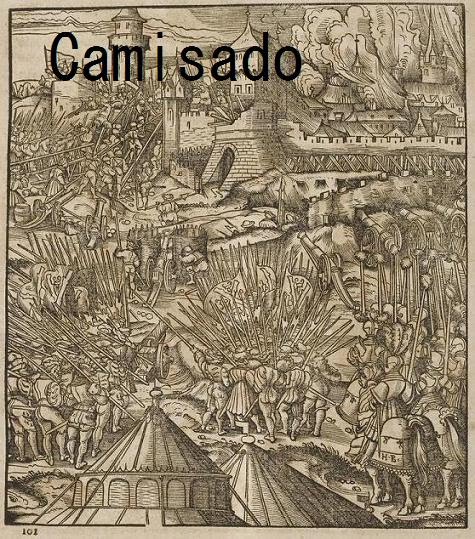A momentus post today; I have a new set of modular terrain! Following my games at Stuart's using his modular boards I decided to bite the bullet and invest in a set myself. They have been made by David Marshall of TM Terrain
https://en-gb.facebook.com/Tmterrain/ and he has done a great job on them. Due to the nature of my collection I was keen to have a set that was as flexible as possible with some hill tiles, a coastal tile, a dry ditch or sunken road (as of course I am obsessed with sets of earthworks!) and a river. There are some plain grass tiles and some plain earthern tiles that merge with these that I can put my other terrain pieces on. Some of my existing terrain will need to be partly repainted to match the lighter earth on the tiles and I will probably get around to that soon. The pieces will look much better in a lighter earth colour than the very dark brown I painted them in about 15 years ago!
Of course I was keen to set out my figures and see how they looked on the new boards and I haven't done a large army post for ages so to showcase the coastal tile and ditch tiles in particular I set up my very early 16th Century Spanish Army, which now has early Landsknechts to join it. 2,000 of these troops were sent by Maximilian I to aid the beleagured Spanish when they were besieged by the French in Barletta during the War for Naples. What I have attempted to show here (through my usual odd photography with lots of strange angles!) are Spanish forces defending the banks of the River Garigliano in the Winter of 1503.
 |
| The full table set out. |
 |
| The coastal tile is useful to represent the banks of the Garigliano. |
Gonzalo de Cordoba, the Spanish general, had besieged the French in Gaeta following his victory over them at Cerignola in April 1503. The French had succesfully reinforced the garrison of Gaeta forcing Gonzalo to retreat and defend the coastal route to Naples against an advancing French army by holding the banks of the river Garigliano while the inland route to Naples was defended by determined Spanish garrisons. A stalemate developed in which the French attempted to force their way across the river using a pontoon bridge but the Spanish doggedly defended the banks using trenches and earthworks, which is what I have tried to represent here. The stalemate was finally broken by the Spanish surprise attack, and subsequent Battle of Garigliano, after they had built their own pontoon further upriver.
In the photos above I have used the coastal tile to represent the banks of the large River Garigliano. I think I will put up another post to showcase the river tiles seperately. The photos below show the Spanish army defending the trench with artillery, mantlets and gabions. I am really pleased with how it all works together, I think the ditch and guns combine to give some idea of how the Spanish liked to defend positions in the early 1500s. I can already envisage all sorts of uses for the tiles in the future when combined with various parts of my collection...
 |
| Spanish guns defending the trench. |
 |
| The Jinetes form a skirmish line in front of the trench. |
 |
| German, Italian and Spanish Infantry defending the earthworks. |
 |
| The Spanish Army with the infantry manning the earthworks and the cavalry waiting in the wings. |
 |
| The Spanish trench. |
 |
| The Spanish Infantry line. |
 |
| A view from the trenches! |
 |
| Behind the Spanish trench. |
 |
| Italian Mounted Arquebusiers and Crossbowmen wait in reserve. |
 |
| The well defended position bristles with guns. |
 |
| The Spanish earthworks with light horse and infantry on the flank. |
 |
| The Spanish Men-at-Arms supported by Italian Mounted Crossbowmen. A hill tile with a slope can be seen in the background. |
 |
| Early Landsknecht Pike sent to aid the Spanish by Maximilian I wait behind the Arquebusiers in the trench. |
 |
| The Artillery Crews. |
 |
| A close up of the Earthworks. |
 |
| Spanish Arquebusiers wait in the trench. Note the hill tiles at the end of the board. |
 |
| Spanish Guns in the foreground with the Infantry top left and the Cavalry top right. |
 |
| Landsknechts sent by Maximilian I and Italian mercenary infantry under a Colonna banner. |
 |
| The Jinetes patrolling the banks of the river. |
 |
| The guns behind the trench. |
 |
| More guns further down the line. |
 |
| A view from the other end of the trench. |





























